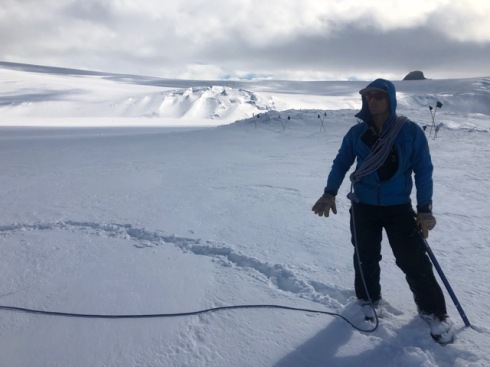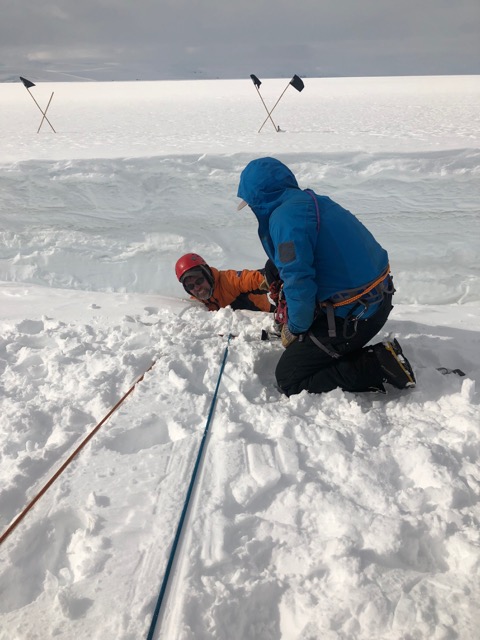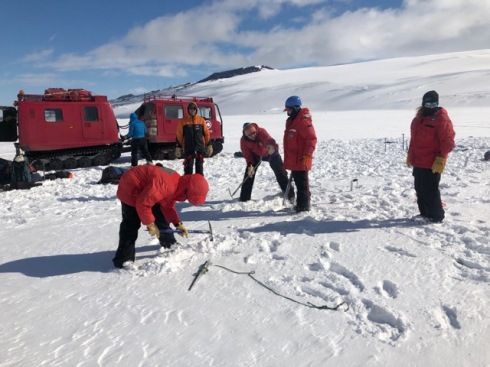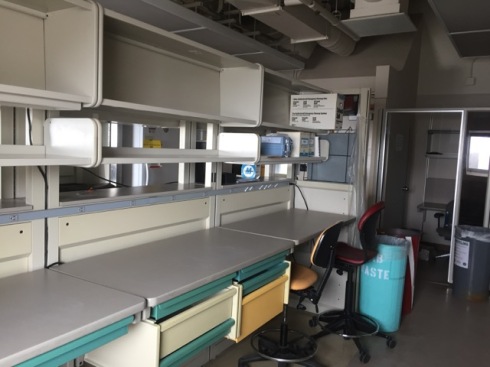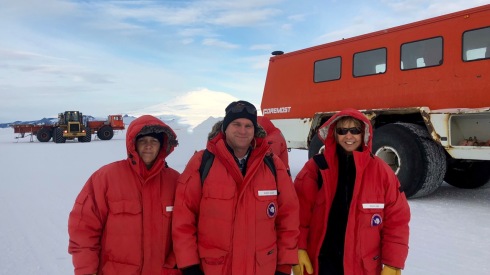22 Dec. 2017: We are stuck at McMurdo for an extra day as the weather has grounded our flight to Shackleton Glacier – the remote field camp where we’ll be working for the next 2 weeks. Hopefully one extra day doesn’t turn into multiple days. In Antarctica, weather always has the last word. So instead of passing the time with yet another viewing ofThe Big Lebowski – I’m writing this post to give a broad overview of what we are doing down on the Shackleton Glacier (or planning to do if we ever get there).
Despite its reputation, Antarctica isn’t completely covered in ice. There are small pockets of exposed land – including ice-free peaks and ridges that poke out of the glacial ice. We will be studying the soils found on some of these peaks and ridges within the Trans-Antarctic Mountains. These soils, and the organisms living in them, are the sirens that have drawn us down here to the ice.
The Trans-Antarctic Mountains put most other mountain ranges to shame. They extend 3,000 miles across the continent – a belt 100-300 km wide extending across the hefty girth of the continent. Some of the peaks are over 12,000 feet high and, despite currently being surrounded by glaciers more than a mile thick, the mountains are some of the best places in the world to find dinosaur fossils. It is a mountain range of superlatives and we are heading to Shackleton Glacier – right in the middle of the Trans-Antarctic Mountains – to hunt soils.
Now – when I think of soil, I think of a tallgrass prairie soil in eastern Kansas – deep, dark-brown, loamy soils that smell beautiful (at least to soil scientists) and are incredibly fertile. These are not the types of soils we will find in Antarctica. Rather, the soils we will find do not sustain any vascular plant growth, they will have very low levels of organic matter, and they are often very salty. These soils will only be found on ice-free peaks and ridgelines – a cold (duh!), windy, and incredibly dry place – a convenient place to freeze dry any leftover sandwiches sitting in your pack. Despite the inhospitable conditions, there are many organisms that can survive in these soils – including bacteria, fungi, rotifers, nematodes, and some arthropods. We may consider Antarctic soils ‘extreme’ – they just call them home.
Despite the logistical challenges of working in Antarctica, the organisms living in Antarctic soils have been studied by numerous researchers over the years. I am fortunate to be on a team with 3 of the most esteemed Antarctic soil biologists on the planet (Diana Wall, Ian Hogg, and Byron Adams). Collectively they have spent >65 field seasons studying Antarctic biodiversity. Their knowledge of Antarctic soils and ecosystems is unmatched. Why have they have spent so many holiday seasons on the ice instead of with their families back home? – it certainly isn’t the food at McMurdo station (though tuna casserole has its charms). Rather, what brings these biologists to Antarctica is the chance to study soils and ecosystems that are unlike those found anywhere else on Earth. The communities that live in these soils are not nearly as diverse as what we might find in a Kansas prairie, but there is beauty in their simplicity.
So, if this lengthy preamble hasn’t put you to sleep yet, you may be wondering why we are doing this particular expedition to the Trans-Antarctic Mountains. Why are we trying to fly to a glacier near the south pole to collect soil (and try to avoid frostbite)? The simplest answer is that we want to satisfy our curiosity. What organisms are able to survive in this environment and are the soil biota found there distinct from those found elsewhere? What unique adaptations do these organisms have that allow them to persist in these inhospitable conditions? How do these organisms interact to form functioning communities? These basic questions, and many others, remain largely unanswered.
Of course – just saying “There are some cool organisms there, let’s go check them out!” is not sufficient justification for launching an expedition (though it may be sufficient justification for cruising the Vegas strip on a Saturday night). We are going there to test hypotheses. Specifically, we want to test hypotheses related to how soil age might influence the assembly and functioning of these soil communities. About 20,000 years ago, the thickness of the glacier was even greater than it is today. During this period of time – called the Last Glacial Maximum, or ‘LGM’ if you are trying to impress geologists at a cocktail party (though geologists usually prefer beer over cocktails) – the Shackleton glacier extended roughly 1,500 feet higher up the slopes of the surrounding peaks. This means that 20,000 years ago, some of the lower slopes that are now ice-free, were under a glacier, and these slopes have had relatively little time to develop soil. In contrast, those soils higher up on the peaks were not under ice during the Last Glacial Maximum and these soils are older and may even have served as refugia (safe shelters where organisms can persist without being stuck under tons of ice). We are taking advantage of this gradient in soil ages (from young soils down low on the slope, to more mature soils higher up) to examine how Antarctic soil communities develop over time and what biotic and abiotic factors ultimately shape their composition.
Of course, before we can start collecting the soils to address these, and a range of other questions, we first have to get there. Hopefully, the weather will clear up and we can fly tomorrow. Mysterious soils await.

